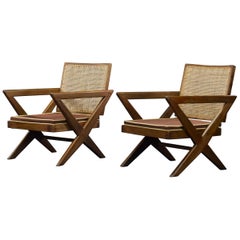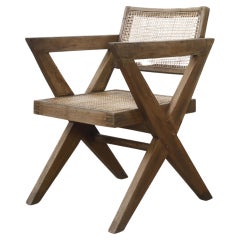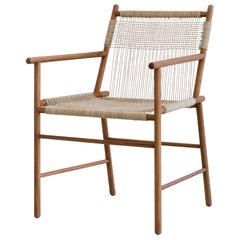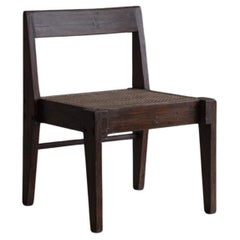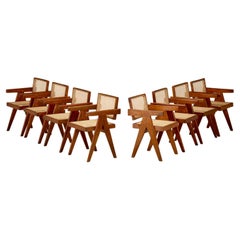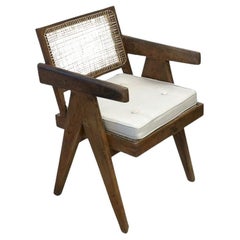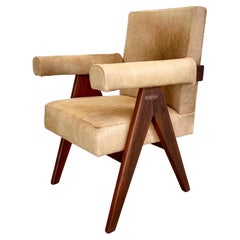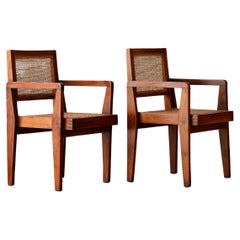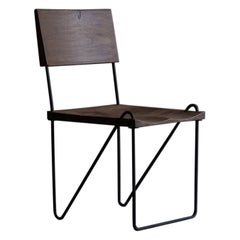South Asian Teak Chairs
Vintage 1950s Indian Mid-Century Modern Dining Room Chairs
Cane, Teak
Vintage 1960s Indian Mid-Century Modern Armchairs
Cane, Teak
2010s Indian Chairs
Teak
Mid-20th Century Indian Mid-Century Modern Chairs
Wood, Teak, Cane
Vintage 1950s Indian Modern Chairs
Teak, Cane
Vintage 1960s Indian Mid-Century Modern Chairs
Cane, Teak
Vintage 1950s Indian Chairs
Cowhide, Teak
20th Century Indian Mid-Century Modern Chairs
Cane, Teak
Vintage 1950s Indian Mid-Century Modern Chairs
Iron
Vintage 1950s Indian Mid-Century Modern Chairs
Cane, Teak
Vintage 1960s Indian Anglo-Indian Chairs
Teak
Mid-20th Century Indian Mid-Century Modern Office Chairs and Desk Chairs
Cane, Teak
Vintage 1950s Indian Mid-Century Modern Chairs
Cane, Teak
Vintage 1950s Indian Mid-Century Modern Dining Room Chairs
Cane, Teak
Late 20th Century Indian Anglo-Indian Chairs
Teak
Vintage 1950s Indian Mid-Century Modern Chairs
Cane, Teak
Vintage 1950s Indian Mid-Century Modern Chairs
Cane, Teak
2010s Indian Anglo-Indian Armchairs
Bone, Teak
Vintage 1950s Indian Mid-Century Modern Chairs
Cane, Teak
2010s Indian Other Chairs
Metal, Copper, Sheet Metal
2010s Indian Other Chairs
Metal, Copper, Sheet Metal
2010s Indian Other Chairs
Metal, Copper, Sheet Metal
2010s Indian Other Chairs
Metal, Brass, Sheet Metal
2010s Indian Other Chairs
Metal, Brass, Sheet Metal
2010s Indian Other Chairs
Metal, Brass, Sheet Metal
2010s Indian Other Chairs
Sheet Metal
2010s Indian Other Chairs
Metal, Brass, Sheet Metal
2010s Indian Other Chairs
Metal, Copper, Sheet Metal
2010s Indian Other Chairs
Metal, Brass, Sheet Metal
2010s Indian Other Chairs
Metal, Brass, Sheet Metal
2010s Indian Other Chairs
Sheet Metal
2010s Indian Other Chairs
Sheet Metal
2010s Indian Other Chairs
Metal, Sheet Metal
2010s Indian Other Chairs
Metal, Sheet Metal
2010s Indian Other Chairs
Metal, Sheet Metal
2010s Indian Other Chairs
Sheet Metal
2010s Indian Other Chairs
Sheet Metal
2010s Indian Other Chairs
Sheet Metal
2010s Indian Other Chairs
Sheet Metal
2010s Indian Other Chairs
Metal, Sheet Metal
Vintage 1950s Indian Chairs
Cane, Teak
Vintage 1950s Indian Mid-Century Modern Chairs
Cane, Teak
Vintage 1950s Indian Chairs
Cane, Teak
Vintage 1950s Indian Mid-Century Modern Chairs
Cane, Teak
Mid-20th Century Indian Folk Art Chairs
Hardwood, Teak
Vintage 1950s Indian Mid-Century Modern Chairs
Cane, Teak
2010s Indian Other Chairs
Brass
2010s Indian Other Chairs
Brass
2010s Indian Other Chairs
Brass
2010s Indian Other Chairs
Brass
2010s Indian Louis XV Chairs
Metal, Brass, Bronze, Copper, Sheet Metal
2010s Indian Art Nouveau Chairs
Metal, Bronze, Sheet Metal
Vintage 1950s Indian Office Chairs and Desk Chairs
Cane, Teak
2010s Indian Art Nouveau Chairs
Metal, Bronze, Sheet Metal
Vintage 1950s Indian Mid-Century Modern Chairs
Rattan, Teak
Mid-20th Century Indian Mid-Century Modern Chairs
Cane, Teak
2010s Indian Art Deco Dining Room Chairs
Metal, Bronze, Sheet Metal
Mid-20th Century Indian Mid-Century Modern Chairs
Cane, Teak
2010s Indian Post-Modern Chairs
Brass
2010s Indian Art Deco Armchairs
Metal, Bronze, Sheet Metal
- 1
South Asian Teak Chairs For Sale on 1stDibs
How Much are South Asian Teak Chairs?
Finding the Right Chairs for You
Chairs are an indispensable component of your home and office. Can you imagine your life without the vintage, new or antique chairs you love?
With the exception of rocking chairs, the majority of the seating in our homes today — Windsor chairs, chaise longues, wingback chairs — originated in either England or France. Art Nouveau chairs, the style of which also originated in those regions, embraced the inherent magnificence of the natural world with decorative flourishes and refined designs that blended both curved and geometric contour lines. While craftsmanship and styles have evolved in the past century, chairs have had a singular significance in our lives, no matter what your favorite chair looks like.
“The chair is the piece of furniture that is closest to human beings,” said Hans Wegner. The revered Danish cabinetmaker and furniture designer was prolific, having designed nearly 500 chairs over the course of his lifetime. His beloved designs include the Wishbone chair, the wingback Papa Bear chair and many more.
Other designers of Scandinavian modernist chairs introduced new dynamics to this staple with sculptural flowing lines, curvaceous shapes and efficient functionality. The Paimio armchair, Swan chair and Panton chair are vintage works of Finnish and Danish seating that left an indelible mark on the history of good furniture design.
“What works good is better than what looks good, because what works good lasts,” said Ray Eames.
Visionary polymaths Ray and Charles Eames experimented with bent plywood and fiberglass with the goal of producing affordable furniture for a mass market. Like other celebrated mid-century modern furniture designers of elegant low-profile furnishings — among them Ludwig Mies van der Rohe and Finn Juhl — the Eameses considered ergonomic support, durability and cost, all of which should be top of mind when shopping for the perfect chair. The mid-century years yielded many popular chairs.
The Eameses introduced numerous icons for manufacturer Herman Miller, such as the Eames lounge chair and ottoman, molded plywood dining chairs the DCM and DCW (which can be artfully mismatched around your dining table) and a wealth of other treasured pieces for the home and office.
A good chair anchors us to a place and can become an object of timeless appeal. Take a seat and browse the rich variety of vintage, new and antique chairs on 1stDibs today.
